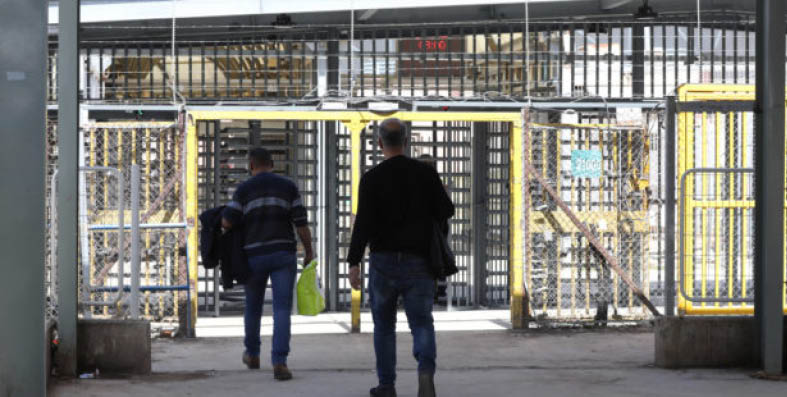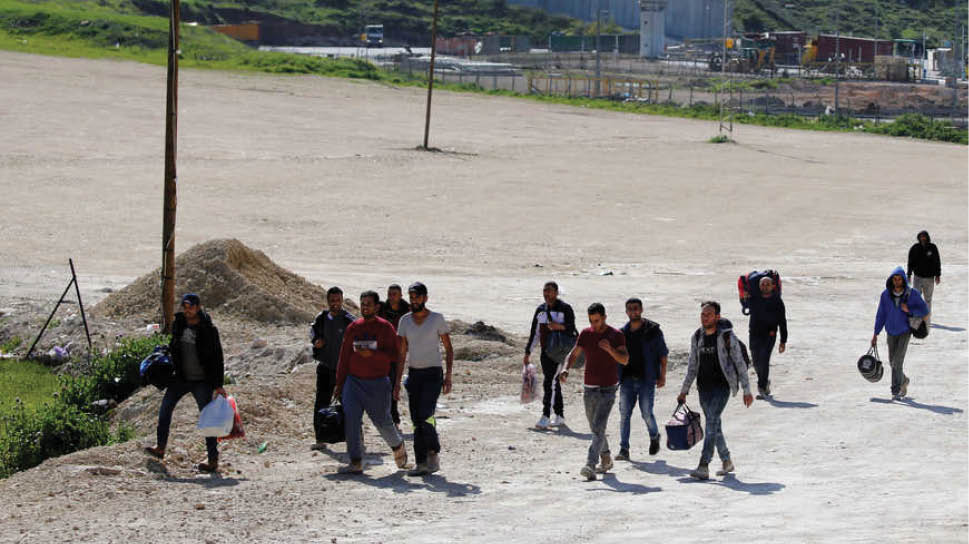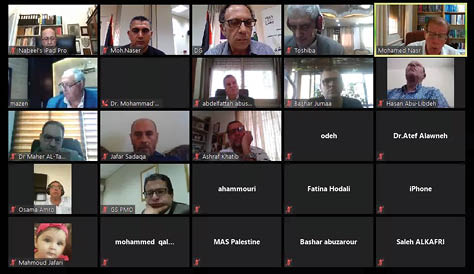On Wednesday, April 22, 2020, the Palestine Economic Policy Research Institute (MAS) held a roundtable session via videoconference to present the preliminary results of its research on the scale of the economic cost of the COVID-19 pandemic and the ensuing emergency measures in the West Bank. Since the onset of the crisis, MAS has commenced several studies, some of which base their calculations on the World Bank’s computable general equilibrium model of the Palestinian economy to simulate the conditions of the crisis and its potential effects.
Due to the uncertainty over how the pandemic and emergency measures will progress, MAS researchers modeled their effect through two possible scenarios. The analysis excluded the Gaza Strip, as insufficient information is available regarding the nature of restrictions and the behavior of the Strip’s economic sectors.
In the first scenario, the emergency measures would be lifted a month and a half after the lockdown ordered by the Prime Minister on March 22. The assumption is that by that time, the Palestinian government would have contained the spread of the virus in a way that would allow life and economic activity gradually to return to normal. In the second scenario, the Palestinian government would have to extend the restrictions on economic activity for another month and a half. This scenario assumes that after this extension, the restrictions would be removed gradually, but at a slower pace than in the first scenario.

In the first scenario, the West Bank’s 2020 real GDP would shrink by 20.3 percent from the baseline scenario, representing a loss of US$2.920 billion in current prices. In the second scenario, real GDP would shrink by 35 percent or US$5.028 billion in current prices. In the first scenario, government spending would decrease by 15 percent, coupled with a 23 percent decrease in government revenues, whereas in the second scenario, the government would see its revenue plunge by 33 percent, and thus its spending would decrease by a severe 20 percent.
Commenting on this estimation exercise, Mr. Raja Khalidi, the director-general of MAS, stressed that these results converge with the economic forecasts that the Palestinian Central Bureau of Statistics has recently published, with some differences in certain values or percentages. Given that each institution used its own economic-forecasting models that adopt different methodologies, the relative similarity in their results attest to their credibility and indicate that this is an accurate simulation of the economy’s expected trends in the near future. Khalidi added that the two institutions and other national partners will keep working closely and cooperate on various levels, especially on the technical level, tracking and monitoring any developments that would help in developing, updating, and dovetailing their economic forecasting approaches.

In the first scenario, 17 percent of the West Bank’s workers would lose their jobs, while in the second, 25 percent of workers would likely be laid off. This would raise the unemployment rate for individuals living and working in the West Bank (including those who work in Israel and its settlements) to 30 percent and 36 percent, respectively. Moreover, when adding the loss of revenue from employment in Israel and its settlements to the West Bank’s lost GDP, the total loss to Gross National Income (including GDP) rises to 25 percent (approximately US$4.3 billion) in the first scenario and 38 percent (US$6.3 billion) in the second scenario.
Detailed results about the methodology and scenarios will be published soon in a special issue of MAS’s Economic Monitor. The Monitor will also feature preliminary studies of the expected significant effects of the crisis on various sectors during 2020. Through this effort, MAS seeks to provide Palestinian decision-makers with research-based projections that are supported by rational reflection on the economic situation. It hopes thereby to help the decision-making community implement the necessary interventions in the most vulnerable socioeconomic sectors, helping to reduce losses, spare livelihoods, and allow all communities and sectors to survive the crisis.
The researchers were very careful in calculating the potential losses, taking into consideration the severity of the lockdown restrictions for every economic sector, the decrease in the number of workers in Israel and the settlements, international restrictions on exports and imports, the slowdown in cash flow to Palestine, and the decline in the number of Palestinians who live in Israeli territories yet regularly shop in Palestinian markets throughout the year. With these determinants, the results of the computable general equilibrium model show the size of the coronavirus-triggered economic loss and compare it with the baseline scenario, whereby the West Bank’s economy would otherwise have grown at the same rate it recorded in 2017–2019.

The researchers could not take into consideration the measures that the government has taken since April 22 to ease the lockdown. Their assumptions in the first scenario largely reflect this partial removal, as they assumed already that emergency restrictions would be lifted by 50 percent in the two weeks following the end of the emergency period, and that such restrictions would finally be lifted for most economic sectors after this period, except for accommodation, food services, and public transport.
The results also estimate the change in added value for the main economic sectors. In the first scenario, transportation, warehousing, accommodation, and restaurant services – the activities under strictest restrictions – would be the most affected industries. In the second scenario, the mining and quarrying, manufacturing, and construction sectors would be the biggest losers. Meanwhile, the added value for the agricultural sector would decrease slightly compared to the other sectors. Agriculture has continued to record a high demand from consumers and has seen the least restrictions; it is still a trump card for sustenance when other economic activities deteriorate – a sobering reminder of the not-so-dissimilar economic shocks to the economy during the second Intifada.


